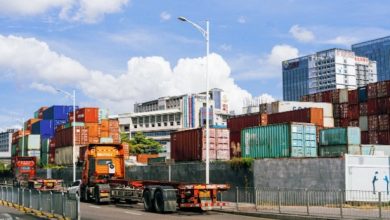Businesses are rethinking how work areas function, especially when physical expansion is not practical or desirable. Instead of spreading outward, companies are concentrating on refining compact zones so they operate with purpose, clarity, and precision. Modern teams expect environments that support quick transitions, organized movement, and efficient use of every inch. This focus has encouraged companies to build spaces that feel intentional rather than cramped, allowing productivity to thrive even within limited boundaries.
A minimal footprint does not have to limit capability. With the right structural choices, thoughtful zoning, and carefully selected assets, a business can create a work setting that feels cohesive, agile, and well-orchestrated. Every corner becomes useful, every pathway carries function, and every workstation contributes to a larger system that supports long-term operational stability. This mindset has become essential for companies aiming to remain competitive without constantly expanding their physical space.
Compact Space Solutions
Businesses that work within restricted areas often seek external units that enhance storage, workflow management, or staging capacity. Shipping containers are valuable here because they offer durable, enclosed, and versatile space without interfering with daily operations. They help companies reorganize crowded rooms, protect equipment, and maintain a controlled environment for inventory, tools, or transitional tasks. These units give businesses the ability to restructure their space without disruptive construction or redesign.
Many companies nowadays consider buying a shipping container when they want consistent access to additional square footage. Ownership gives them a dependable asset that can support seasonal surges, material overflow, or specialized project zones. As the option of a shipping container for sale is available these days, many businesses are taking advantage of it to expand storage without major property changes.
Modular Layout Planning
Modular layouts allow businesses to reconfigure rooms with precision as needs shift. Movable partitions, adjustable fixtures, and interchangeable components make it possible to redesign a workspace without halting operations. This style of planning helps companies respond to new tasks or teams without major structural changes.
Companies benefit from modular systems because they can reposition sections quickly and maintain functional order. Work zones can expand, contract, or rotate based on immediate requirements, supporting consistent productivity even when floor space is limited.
Smart Use of Narrow Pathways
Narrow pathways often go unused or become cluttered, yet they carry significant potential. When arranged thoughtfully, these slender routes can guide movement, streamline transitions, and support efficient circulation throughout the facility. They help keep work flowing instead of forcing staff around obstacles or congested areas.
Clear markings, strategic placement of small equipment, and well-defined traffic patterns turn these pathways into purposeful routes. When organized with intention, even the tightest corridors contribute to a smoother, more predictable workflow.
Multi-Purpose Corners
Corners can become productive micro-zones when furnished with the right tools or functions. Instead of letting them sit underutilized, businesses can convert them into mini storage points, documentation stations, quick-access tech hubs, or compact task areas. Such modest spaces provide structure and continuity where a standard workstation may not fit.
Well-developed corner zones help reduce congestion on the main floor and support small, repetitive tasks that benefit from consistency.
Collapsible Work Areas
Collapsible work areas give businesses the freedom to activate or retract stations based on immediate demands. Foldable desks, retractable platforms, and compact tool setups allow teams to perform specialized tasks without permanently occupying valuable space. This design supports agility and keeps the floor clean when stations are not required.
Collapsible setups also help companies support temporary projects, seasonal tasks, or short-term workloads. Such flexible stations allow the environment to adjust without compromising organization or flow, making them ideal for operations working inside strict spatial limits.
Efficient Traffic Flow Patterns
Well-designed movement routes support precision inside compact workplaces. When foot traffic follows deliberate paths, teams experience fewer interruptions and less congestion. Marked lanes, directional guidance, and unobstructed entry points create a setting where people can circulate with confidence.
An intentional flow system also helps different departments coordinate their tasks without stepping on each other’s responsibilities. Incoming materials, active work areas, and outgoing items travel through the facility in a controlled manner. This level of structure strengthens consistency and safeguards productivity, even during high-demand periods.
Integrated Micro-Workstations
Micro-workstations give businesses specialized areas without sacrificing valuable space. These compact stations support focused tasks such as labeling, documentation, assembly, or digital input. They maintain clarity in the workspace by keeping essential functions contained within small, efficient footprints. Their design eliminates unnecessary movement and supports a stronger sense of organization.
Creating these stations helps reduce clutter across the main floor. Each micro-unit carries a clear purpose, preventing tools and materials from spilling into unrelated areas. This concentrated setup allows teams to complete recurring tasks quickly while maintaining a clean and controlled environment.
Controlled Noise Pockets
Noise pockets offer a practical solution for maintaining concentration inside compact workspaces. Designated zones use partitions, soft materials, or strategic placement to reduce sound transfer. They support conversations, brief meetings, and individual focus tasks without disrupting the wider environment.
Companies benefit from these pockets because they promote mental clarity. Staff can handle calls, review documents, or manage sensitive tasks with fewer distractions. Even in a small facility, controlled acoustic zones contribute to a more polished workflow.
Streamlined Supply Positioning
Precise supply placement strengthens operational consistency. As materials are stored in deliberate, reachable positions, teams avoid wasted time searching for items. Clearly labeled sections, color-coded categories, and tiered access points guide employees toward what they need with minimal effort. In turn, this elevates daily performance and supports accurate work.
A streamlined system also reduces overcrowding in compact zones. Supplies remain organized, predictable, and easy to monitor. This simplifies restocking and prevents last-minute delays that can disrupt production or service schedules.
Dynamic Shelf Configurations
Shelving that adapts to changing inventory or workflow requirements gives a business powerful control over its limited footprint. Adjustable tiers, movable brackets, and modular structures allow staff to reconfigure storage layouts with precision.
Dynamic shelving encourages better organization, as teams can reorganize sections quickly as stock levels fluctuate or as departments require new arrangements. This adaptability strengthens long-term stability and keeps the workspace responsive to evolving demands.
Compact workplaces gain remarkable resilience when their design is purposeful and their assets are chosen with care. Businesses can create highly functional environments through strategic zoning, refined pathways, modular setups, and adaptable storage systems. Each element contributes to a workplace that operates with clarity and consistency, even when space is limited.




